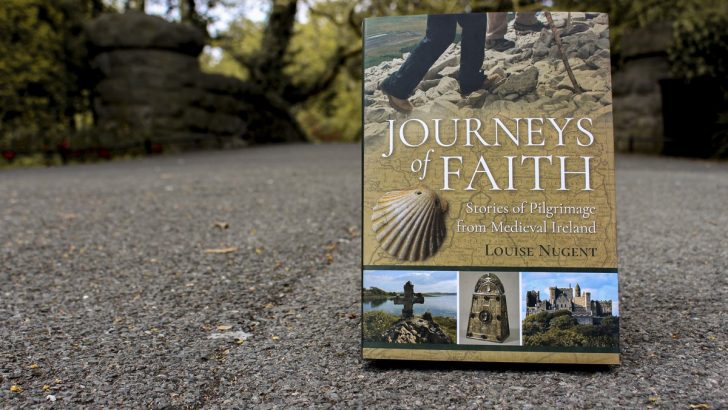Journeys of Faith: Stories of Pilgrimage from Medieval Ireland
by Louise Nugent (Columba Books, €26.99)
This book is an epitome of a thousand years of Irish history, roughly 500 AD to 1500 AD. It is a reminder, if one is really needed, of just how important the context of history is to understanding present attitudes to religion and spirituality in Ireland.
Dr Nugent’s book is one which I suspect many ordinary readers, especially those who are local historians, have long felt the need of. Her theme over this period is the various kinds of pilgrimage, local and European with which people in Ireland have involved themselves. But this is also a book which will be valued by many academics too: the astonishingly detailed and lengthy bibliography, which suggests that the author may have read or seen everything connected with Irish pilgrimages and pilgrims.
Humanities
Like so many others these days, in a period when universities are keener on promoting posts in science rather than the humanities, she works as an independent scholar. She is eminently well qualified with degrees from UCC and UCD. Her doctorate dealt with pilgrimage in medieval Ireland, the research creating the foundations of this book.
But she also curates a popular blog on the topic, and so is skilled in communicating the subject to the widest possible audience, bringing it right into the public realm.
This book deals in depth with Irish pilgrimages, such as Lough Derg, and the mentalities behind them. St Patrick’s Purgatory brought people from all over Europe. But to reach the mountains of Donegal from, say, Hungary one needed status and wealth; travel, remember, was for many in the middle ages an expensive affair, it was not for everyone.
I feel myself that in Brittany people manage to get the balance right between prayer and patrimoni”
The author also follows the Irish abroad to European shrines, so giving, in the context of time, a universal view of Christendom, from Clonmacnoise to Jerusalem, the city on which the medieval Christian imagination was fixed.
The illustrations which are numerous and very well selected also enlarge the book in a remarkable way.
Aside from all this, Dr Nugent also deals with the legends, the rites and prayers involved. And in the very end of it all gets her pilgrims home again.
In these pages we can follow in very human detail the continuing story of the passage of faith over the centuries in Ireland in a very vivid way.
But a point strikes this reviewer on reaching the end: is there not some way that these ancient pilgrimages in Ireland can be revived and sustained, while not allowing them to become a part of a ‘tourist industry’ .
I feel myself that in Brittany people manage to get the balance right between prayer and patrimonie. A pilgrimage such as that to Sainte-Anne-d’Auray (Morbiahn) is an example.
This dates from 1625, outside Dr Nugent’s period. But this shrine shows how on a still intimate scale pilgrimage can sustained itself and maintain the medieval sense of reverence and devotion and simplicity, that are essential to true religion.
Difficult to achieve, but not impossible, and much would depend on local people, of course, and a developed resistance to turning everything into a ‘revenue-stream’. Some company or association should take it in hand. We will have to see ‘when all this is over’.
But even in early medieval days, the era of what Frank O’Connor once called “the little monasteries”, cautious voices could be heard from time to time:
Techt do Róim,
mór saítho, becc torbai;
in Rí con-daigi i foss,
manim bera latt ní fhogbai.
To go to Rome / is little profit, endless pain; / the master that you seek in Rome / you find at home or seek in vain.
(Translation by Frank O’Connor)
To contact Louise Nugent’s blog and share in the conversation visit her website www.pilgrimagemedievalireland.com.
The Grand Pardon de Sainte Anne, the largest pilgrimage in southern Brittany is held annually on July 26, the feast of St Anne, with religious services, picnics and dancing, many pilgrims wearing traditional costumes.
To order the book, visit www.columbabooks.com.


 Peter Costello
Peter Costello
